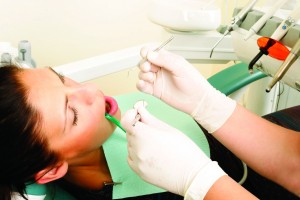 Many patients have a significant fear of dental procedures. I myself suffer from dental phobia. This fact is interesting because my grandfathers were both dentists and I grew up going to their offices. The time spent there instilled in me that dental procedures, by in large, really do not hurt (yet I look like someone getting ready to take off in a space shuttle once I am laid back in the chair). It is amazing how we can often tolerate other procedures, but when it comes to our mouths we become extremely anxious. Fortunately, much can be done to help ease the anxiety and make dental procedures both comfortable and non-stressful.
Many patients have a significant fear of dental procedures. I myself suffer from dental phobia. This fact is interesting because my grandfathers were both dentists and I grew up going to their offices. The time spent there instilled in me that dental procedures, by in large, really do not hurt (yet I look like someone getting ready to take off in a space shuttle once I am laid back in the chair). It is amazing how we can often tolerate other procedures, but when it comes to our mouths we become extremely anxious. Fortunately, much can be done to help ease the anxiety and make dental procedures both comfortable and non-stressful.
What is IV Conscious Sedation:
IV Conscious Sedation (often referred to as “twilight sleep”) is a technique used to help relax a patient before and during a procedure. It should not be confused with general anesthesia in which the patient is literally “under” (in an unconscious state). This form of sedation decreases anxiety and can bring a patient to the level of light sleep. The patient can be aroused by voice or light touch. In most cases, little or no memory of the procedure will occur (yes, it is sad that I chose a profession in which patients prefer not to know I exist).
Is it Safe:
Safety is of course a main concern of patients. In fact, IV Conscious Sedation is considered extremely safe. Patients remain conscious and medications are able to be given in very small increments, with the effects almost immediate, until the desired sedation is achieved. Using this technique allows the doctor to tightly control the dose of the medications given. This is very different than taking a medication orally. A patient may respond quite differently to a dose of a pill taken by mouth then another patient, therefore the doctor has less control of the level of sedation. In addition, IV Sedation allows rapid reversal of the sedation if necessary.
How Does it Work:
Typically the sedation medication is given until the patient is very relaxed (possibly even lightly sleeping) and the anxiety gone. Once this is achieved, the dental anesthetic can be given and the procedure performed. Incremental doses of the medication can be given to bump the level of sedation throughout the visit. Additionally, medications such as anti-inflammatories, antibiotics or others can be given before the procedure is completed. While under sedation, the patient’s vital signs are continually monitored.IV Conscious Sedation can truly help patients overcome the fear of dental procedures in a very safe and effective manner.
Lee R. Cohen, D.D.S., M.S., M.S.
4520 Donald Ross Road, Suite 110
Palm Beach Gardens, FL 33418
Phone: 561-691-0020
www.pbcperio.com
Check Also
Physical Therapy for the Brain
Have you noticed you have difficulty hearing your family and friends in a noisy restaurant? …
 South Florida Health and Wellness Magazine Health and Wellness Articles
South Florida Health and Wellness Magazine Health and Wellness Articles




